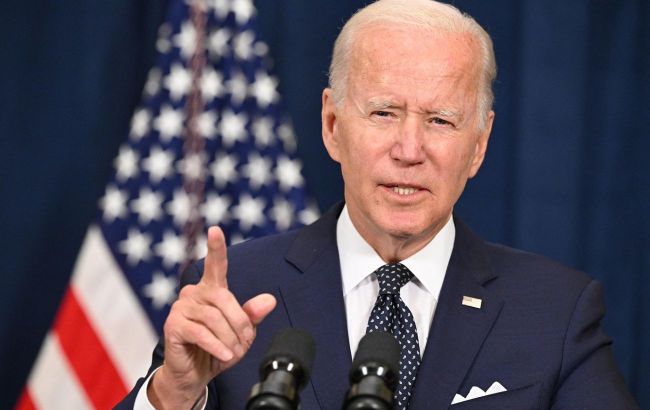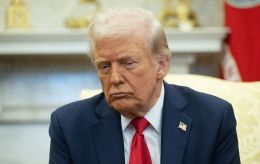Rising prices vs. economic growth: How inflation could decide fate of US election
 US President Joe Biden (Getty Images)
US President Joe Biden (Getty Images)
Donald Trump and Kamala Harris are actively exploiting the economic theme in the US presidential race.
Why this is important for the US and what the candidates propose to change, read in the article below.
Сontents
- Root of problem - what is Bidenomics
- How Trump proposes to solve economic problems
- What Kamala Harris proposes to change
The economy and the cost of living for Americans is a key issue in the US presidential election. Biden's economic policy has led to a number of imbalances. Harris, as a member of the current president's team, has to take this into account and look for new ideas, and Trump has the opportunity to criticize their mistakes.
Root of problem - what is Bidenomics
During the Biden years, inflation reached its highest level in forty years, and the situation of American households worsened. Since Biden took office, consumer prices have increased by 19%, and the average worker's salary has risen by 17%.
This is the result of Biden's economic policy, known as Bidenomics. At the beginning of his term, he pushed through Congress to allocate a huge amount of money to overcome the consequences of the Covid-19 pandemic. These were mostly social payments.
Biden's presidency also saw the start of a large-scale rebuilding of transport infrastructure and investments in the green transition of American industry and renewable energy. All of this has already resulted in economic growth and will bring even more benefits in the medium term. In 2023, the country's economy grew by 2.5%. The unemployment rate dropped from 6.3% to 3.7% in the first year of Biden's presidency. Now it has slightly increased to 4.3%. The last time it stayed at this level for so long was more than fifty years ago.
However, this policy has side effects.
Interest rates remain high. The cost of borrowing in the United States is now at its highest level in 22 years, as the Federal Reserve (similar in function to a central bank) keeps its discount rate at a record 5.25-5.5%. This is the interest rate at which the FRS issues loans to banks, and banks lend to the public.
But there have been some changes recently. In June, consumer prices increased by a year-low 3% compared to the same month last year. Thus, the rate of price growth slowed from 3.3% in May. This trend has been observed for the third month in a row, but the situation is changing very slowly.
Another consequence of the Bidenomics is the growth of the US public debt. In early August, it reached USD 35 trillion for the first time in history. This, in turn, requires large amounts of money to service it.
According to a survey by the Financial Times and the University of Michigan, 39% of respondents named Democratic policies as one of the three main causes of inflation over the past six months. Only 24% said the same about Republican policies. At the same time, 60% of respondents said that Harris should choose completely different approaches or significantly change Biden's economic policy.
How Trump proposes to solve economic problems
Trump has been actively criticizing Biden's team for rising prices and the cost of credit. If he is re-elected, he plans to recall past successes.
The main features of Trumponomics will not differ much from those of his first term. What will be new is the speed and efficiency with which he plans to implement his plans. Trumponomics means low interest rates and low taxes, the politician said in a recent interview with Bloomberg Businessweek.
Trump hopes that his plans to cut taxes and regulatory burdens and increase oil production will appeal to voters in swing states.
The former president is going to lower prices by increasing US oil and gas production. According to him, the United States has “more liquid gold than anyone else.” The politician also promises to impose tariffs on imported goods, including up to 60% on Chinese goods.
In his opinion, a tough migration policy is key to increasing domestic wages and employment. According to him, illegal immigrants are willing to work for nothing, so they lower wages for ordinary Americans.
He also proposes to extend the corporate tax cut. As president, Trump reduced the corporate tax from 35% to 21% in 2017 and now promises to make it 20% or even 15%.
There are also new original proposals, such as the abolition of the tip tax, which may attract the attention of young people.
What Kamala Harris proposes to change
Kamala Harris agrees that high prices are a central problem in the economy. But she has been silent for a long time about her economic program, looking for ways in which her position might differ from Biden's. Harris first announced her economic program only on August 16 at a rally in North Carolina.
Among other things, Harris intends to cut “costs for American families.” It is about a tax credit of $6,000 for young families with middle or low income in the first year of a child's life.
The politician called on the US Congress to pass a law against artificially increasing food prices and housing rents. Harris also announced her intention to launch an initiative to build three million new apartments during her 4-year term if elected.
Harris promises she will cut unnecessary bureaucracy and regulatory red tape while protecting consumers and creating a stable business environment with consistent and transparent rules of the game.
After the economic program was released, Harris received the first criticism from the leading American media. It was about the idea of state price regulation.
The Washington Post, for example, published an editorial calling on Harris to come up with serious economic proposals rather than populist statements. The media suggests that in certain cases, administrative price controls can work to a limited extent, but in general, free prices are necessary to maintain the balance of the economy.
The economic programs of both candidates are rather vague, with no details on how they will be implemented. And this is what gives Donald Trump and Kamala Harris opportunities to criticize each other.
Republican presidential candidate Donald Trump is trying to turn the media's attention to himself in opposition to Democratic candidate Kamala Harris.
Sources: statistics on the US economy, public statements by US politicians, and articles by CNN, Axios, Bloomberg Businessweek, and The Washington Post.

